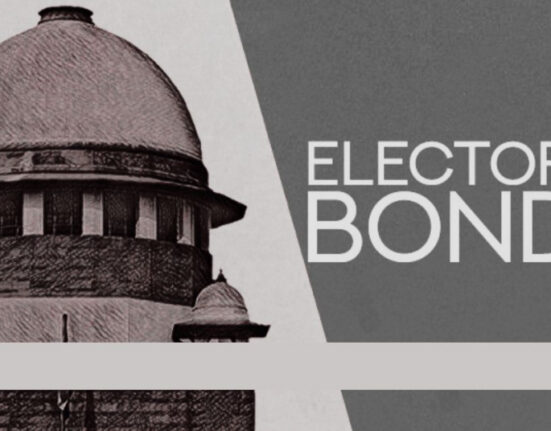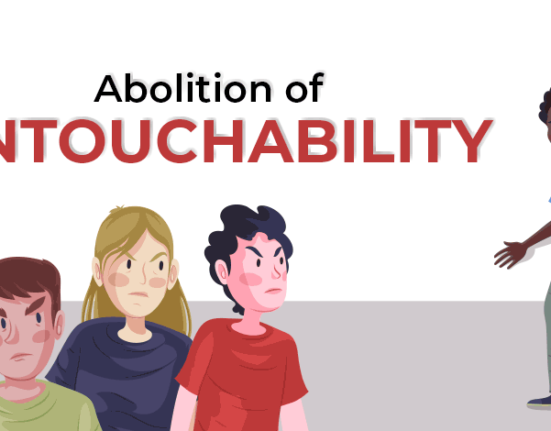INTRODUCTION
Preamble means a preliminary or introductory statement, especially attached to a statute or constitution setting forth its purpose. Preamble is an expressional statement in a document that explains the document’s purpose and underlying philosophy. When applied to the opening paragraphs of a statute, it may recite historical facts pertinent to the subject of the statute. The preamble of India or the Constitution of India is a brief introductory statement that sets out the guiding purpose and principles of the document.
The Preamble to the Constitution of India is a brief introductory statement that sets out guidelines to guide people of the nation, to present the principles of the Constitution, also indicate the source from which the document derives its authority, and meaning. It reflects the hopes and aspirations of the people.
In re BeruBari’s case, The Supreme Court laid down that The Preamble of India or Indian constitution is not an integral part of the Indian Constitution & therefore it can neither be regarded as a source of limitations or substantive powers nor it is enforceable in a court of law. However, Supreme Court of India has, in the Keshavananda Bharti Case, overruled earlier decisions and recognised that the preamble may be used to interpret ambiguous areas of the constitution where differing interpretations present themselves.
Forty-second Amendment, 1976: As originally enacted the preamble described the state as a “sovereign democratic republic”. In 1976 the Forty-second Amendment changed this to read “sovereign socialist secular democratic republic.” Also through this amendment, the phrase “unity of the Nation” was changed to “unity and integrity of the Nation“.
WHAT IS THE PREAMBLE OF INDIAN CONSTITUTION OR INDIA
The preamble of India or Indian Constitution starts with the below-quoted lines:
“WE, THE PEOPLE OF INDIA, having solemnly resolved to constitute India into a SOVEREIGN SOCIALIST SECULAR DEMOCRATIC REPUBLIC
and to secure to all its citizens:
JUSTICE, social, economic and political;
LIBERTY of thought, expression, belief, faith and worship; EQUALITY of status and of opportunity;
and to promote among them all
FRATERNITY assuring the dignity of the individual and the unity and integrity of the Nation;
IN OUR CONSTITUENT ASSEMBLY this twenty-sixth day of November, 1949,do HEREBY ADOPT, ENACT AND GIVE TO OURSELVES THIS CONSTITUTION.”
Preamble of Indian Constitution
PURPOSE OF THE PREAMBLE OF INDIA
Preamble basically is a declaration of–
- The source of the Constitution,
- The statement of its objectives,
- The date of its adoption and enactment.
- Preamble begins with a short statement of its basic values and it contains the philosophy on which our Constitution is built. It is just like an introduction or preface of a book. Preamble actually embodies the spirit of the Constitution.
- It is a key to the minds of the draftsmen.
- It is also the soul of the Constitution.
INTERPRETATION OF THE PREAMBLE OF INDIAN CONSTITUTION OR INDIA
“We, The People of India…”
- This phrase simply indicates that it’s we people, the people of India who are the source of authority behind the Constitution.
- This also has an implication that the Constitution has been drawn up and enacted by the people through their representatives, and not just handed down to them by a king or any outside powers.
“..having solemnly resolved to constitute India..”
- That is to say that by declaring such a phrase we have actually abide ourselves in it’s true spirits to follow and give full effect to the policies and principles laid down in the Constitution.
“sovereign”
- This indicates that India is a sovereign, a nation free from any external control or interference
i.e. no external power can dictate the government of India. India is internally and externally sovereign. Externally free from the control of any foreign power and internally. It has a free government which people directly elects and makes laws that govern the people.
- Constitution may appear to be sovereign as it is the supreme law of the land. However, a document cannot be a sovereign. The people of India, according to this Constitution have given to themselves this Constitution and therefore, we can say that the political sovereignty lies in “We, the people..” and the legal sovereignty lies in the Constitution of India.
- The word “Sovereign” emphasizes that India is no more dependent upon any outside authority.
- It’s membership of that Commonwealth of Nations and that of the United Nations Organization do not restrict her sovereignty.
“socialist”
- The word “socialist” was not there in the original draft of the Constitution. This has been incorporated in the Preamble by the 42nd Constitutional Amendment, 1976.
- This is also reflected in the words “..economic justice..” in the preamble. In a democracy, socialism simply refers to a system of government in which the means of productions are wholly or partly controlled by the State.
- It implies social and economic equality. Social equality in this context means the absence of discrimination on the grounds only of caste, colour, creed, sex, religion, and also language. Under social equality, everyone has equal status and opportunities. Economic equality in this context means that the government will endeavour to make the distribution of wealth more equal and also provide a decent standard of living for all. This is in effect emphasized a commitment towards the formation of a welfare state. India has adopted a socialistic and mixed economy and the government has framed many laws to achieve the aim.
- In D.S. Nakara v. Union of India (UoI), the Supreme Court has observed that the basic framework of socialism is to provide a decent standard of living to the people and specially provide basic social security from cradle to grave. Therefore, it clearly marks the economic equality and equitable distribution of income. {Art. 39(b) and (c)}
“secular”
- The word “secular” also was not there in the original draft of the Constitution. This has also been incorporated in the Preamble by the Constitutional (42nd Amendment) Act, 1976.
- It simply indicates that the State does not recognize any religion as its own religion and thus, treats all religions equally. It’s a status of being neither pro-religion nor anti-religion. It is also not based on total neutrality towards religion. And, based on equal respect for all religions. It embodies the age old concept of ‘sarva dharma sambhava’.
- Art. 25 to 28 constitutes the right to freedom of religion
- Citizens have complete freedom to follow any religion, and there is no official religion. The Government treats all religious beliefs and practices with equal respect and honour.
- In a secular State, the State regulates the relationship between man and man and it is actually not concerned with the relation of man with God.
“democratic”
- This is based on the legal status of “Damus Cratus” which means rule of people i.e. where the Government gets its authority from the will of the people. The rulers are elected by the people and are responsible to them.
- There is a famous definition of democracy as given by Abrahim Lincoln that “democracy is by the people, also of the people and for the people.”
- The first part of the preamble “We, the people of India” and, its last part “give to ourselves this Constitution” clearly indicate the democratic spirit involved even in the Constitution. India is a democracy.
- This simply means that the government of our country is carried on by the people of the State through their representatives and the executive head of the State i.e. the President of India is an elected representative of the People (and not a hereditary monarch as like King of England). In India, President is elected by the people although he is elected indirectly. The people of India elect their governments at all levels (Union, State and local) by a system of universal adult franchise; also known as “one man one vote”. Every citizen of India, who is 18 years of age and above and not otherwise debarred by law, is entitled to vote. Every citizen enjoys this right without any discrimination on the basis of caste, creed, colour, sex, religion or education.
“republic”
- The Constitution of India is republican in nature as the executive head of India is not any hereditary monarch. This indicates the form of Government in which the Head of State will be an elected person but not a monarch like the King or the Queen in England. Such elected Head will be the Chief Executive Head.
- This concept of being republic is taken from France.
- As opposed to a monarchy, in which the head of state is appointed on hereditary basis for a lifetime or until he abdicates from the throne, a democratic republic is an entity in which the head of state is elected, directly or indirectly, for a fixed tenure, the President of India is elected by an electoral college for a term of five years. The post of the President of India is not hereditary. Moreover, Every single citizen of India is eligible to become the President of the country. The leaders of the state and local bodies are also elected by the people in similar manner.
- India became a republic on 26th January, 1950.
“..and to secure to all its citizens..” –
This is a declaratory statement wherein the ultimate objective of the Constitution lies.
“..justice, social economic and political..”
Here, these words indicate that the Indian Constitution aims at achieving three-fold justice. It’s simply about the attainment of common good and that the people cannot be discriminated on the basis of caste, religion or gender or so and that the government or the State should work for the welfare of the people as a whole irrespective of their social status.
- Economic justice can be and ought to be ensured by rational policy making and it’s proper implementation. Socio-economic justice has been ensured by provision such as Art. 38 and 39.
- Political justice is ensured by way of the right of adult franchise i.e. exercise of right to vote as soon as a citizen attains the age of 18 years.
- Social justice actually requires the abolition of all sorts of inequities which result from inequalities of wealth, opportunity, race, caste as well as religion. Art. 14 to Art.18 provides for equality of status and opportunity.
- The concept of social justice thus enables the legislature to enact and the Courts to uphold such legislations-
- to protect the interests of the weaker sections;
- remove economic inequalities;
- to provide a decent standard of living to the people of the country.
“..liberty, of thought, expression, belief, faith and worship..”
The Constitution regards liberty of thought, expression, belief, faith and worship to be essential to the development of the individual and the nation, and therefore the Preamble itself promises to ensure the same to it’s citizens. In simple words, there are no unreasonable restrictions on the citizens in what they think, how they think, how they wish to express their thoughts and the way they wish to follow up their thoughts in action. {Art. 19(1), Art. 25, Art.26 makes provision of such liberty}
“..fraternity, assuring the dignity of the individual and the unity and integrity of the Nation..”
“Fraternity” means the spirit of brotherhood. Simply put it’s that all of us should behave as if we are members of the same family and no one should treat any other person as inferior owing to any factor.
India also being a multilingual and multi-religious State, the unity and integrity can be preserved only through a spirit of brotherhood that pervades the entire country, among all its citizens, irrespective of their differences. Indian Constitution provides for a single citizenship. Moreover, All citizens have been given the right to move freely throughout the territory of India and to reside and settle in any part of the territory of India. [Art.19(1)(d) and Art.19(1)(e)]
“..In our Constituent Assembly this twenty-sixth day of November, 1949, do hereby ADOPT, ENACT AND GIVE TO OURSELVES THIS CONSTITUTION.”
This is a declaratory statement about the adopting, enacting the Constitution.
Art. 394 and some other Articles such as Art. 5, 6, 7, 8, 9, 60, 324, 366, 379, 380, 388, 391, 392 and 393 came into force on 26th Nov.,1949 (celebrated as Lawyer’s day)
The remaining provisions of this Constitution came into force later on 26th January,1950 which day is referred to as the day of commencement of this Constitution. (As also celebrated as the Republic Day)
SUPREME COURTS CASE LAWS ON PREAMBLE WHETHER A PART OF CONSTITUTION OR NOT?
- In Re Berubari Case {AIR 1960 SC 845}, The Supreme Court held that preamble is not a part of the Constitution as it does not create any substantive rights or obligations or powers. It cannot be a source of powers or restrictions on such powers. Further held that preamble is just an important tool for the interpretation of the Constitution.
- In Keshwanand Bharti’s case {AIR 1973 SC 1461}, It was held that preamble of the Constitution cannot be compared to the preamble of any other statute. It was also held that the objectives stated in the Preamble reflect the basic structure of the Constitution. Thus, it must be considered a part of the Constitution. It was not a provision as held in the Berubari’s case.
- In S.R. Bommai v. UoI {AIR 1994 SC 1918} , The Supreme Court held that the preamble forms a part of the Constitution
WHETHER PREAMBLE AMENDABLE OR NOT?
As far as the power of the Parliament to amend the Preamble of Indian constitution or India is concerned, it can be concluded that the Preamble is a part of the Constitution and therefore it can be amended by the Parliament under Article 368 but the ‘basic features’ in the Preamble cannot be amended. Till date, preamble has been amended only ones i.e. by the Constitution (42nd Amendment) Act, 1976. By this 42nd Amendment, four words were added in the preamble i.e. “socialist”, ”secular”, “and integrity.
This Article is a Part of Introduction to Indian Constitution – Social Laws Today
![]()







Leave feedback about this